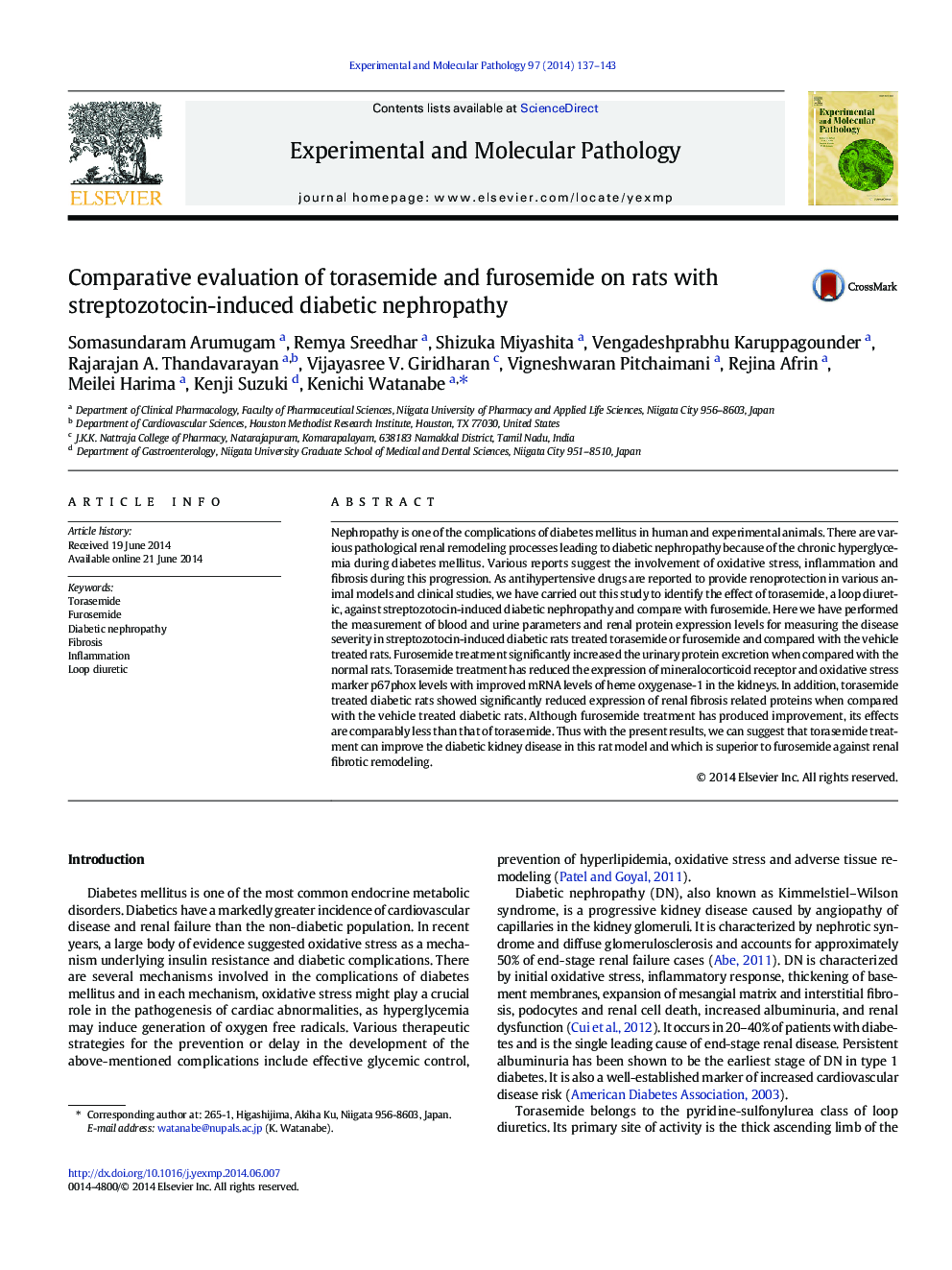| Article ID | Journal | Published Year | Pages | File Type |
|---|---|---|---|---|
| 5888355 | Experimental and Molecular Pathology | 2014 | 7 Pages |
Abstract
Nephropathy is one of the complications of diabetes mellitus in human and experimental animals. There are various pathological renal remodeling processes leading to diabetic nephropathy because of the chronic hyperglycemia during diabetes mellitus. Various reports suggest the involvement of oxidative stress, inflammation and fibrosis during this progression. As antihypertensive drugs are reported to provide renoprotection in various animal models and clinical studies, we have carried out this study to identify the effect of torasemide, a loop diuretic, against streptozotocin-induced diabetic nephropathy and compare with furosemide. Here we have performed the measurement of blood and urine parameters and renal protein expression levels for measuring the disease severity in streptozotocin-induced diabetic rats treated torasemide or furosemide and compared with the vehicle treated rats. Furosemide treatment significantly increased the urinary protein excretion when compared with the normal rats. Torasemide treatment has reduced the expression of mineralocorticoid receptor and oxidative stress marker p67phox levels with improved mRNA levels of heme oxygenase-1 in the kidneys. In addition, torasemide treated diabetic rats showed significantly reduced expression of renal fibrosis related proteins when compared with the vehicle treated diabetic rats. Although furosemide treatment has produced improvement, its effects are comparably less than that of torasemide. Thus with the present results, we can suggest that torasemide treatment can improve the diabetic kidney disease in this rat model and which is superior to furosemide against renal fibrotic remodeling.
Related Topics
Life Sciences
Biochemistry, Genetics and Molecular Biology
Clinical Biochemistry
Authors
Somasundaram Arumugam, Remya Sreedhar, Shizuka Miyashita, Vengadeshprabhu Karuppagounder, Rajarajan A. Thandavarayan, Vijayasree V. Giridharan, Vigneshwaran Pitchaimani, Rejina Afrin, Meilei Harima, Kenji Suzuki, Kenichi Watanabe,
